Holbrook is a small town in southern New South Wales, for me nothing more than a short stop on the Hume Highway, the main artery between Melbourne and Sydney, but it does have a couple of interesting features. The oddest, for a town 250 kilometres and a mountain range away from the nearest ocean, is a submarine apparently floating in a park. See HMAS Otway.
Of more interest for flying types is the local airfield, a sort of spiritual home for ultra-light flying in Australia. The local aero club even maintains a small museum of vintage ultra-light aircraft. Now I have to confess that the sort of aircraft we are talking about here probably wouldn’t have attracted me too much if I had been into flying at the time. The laws then didn’t permit flight over 500 feet AGL and there was no proper flight instruction. It was pretty much a plan for a high fatality rate, but who am I to criticise. I raced motorbikes for years and didn’t think it was stupid at the time. I planned just a day trip, about 90 minutes each way and plenty of time to look around while I was there. There were a couple of places I could stop for fuel on the way back, but I eventually just carried an extra 15 litres with me and topped up at Holbrook.
Here’s my track to Holbrook. There are two areas I have to divert around: the army training restricted area around Puckapunyal – those artillery shells can go pretty high, and the controlled airspace around Albury.
Low cloud prevented an early start but I had plenty of time, and it eventually cleared enough so that it was obviously clearer to the north so I headed off on 058 to my first turning point at Seymour, passing just south of the Puckapunyal area. Pucka is well known to many Australians of my age because it was where many “Nashos”, National Service conscripts did their army basic training. I was only a weekend warrior, but I still spent a fair bit of time at Pucka. One of the more diverting demonstrations I saw there was a barrage being put up by our mortar platoon. With fast firing rate it went something like ” foop bang, foop bang, foop bang, foop _____, foop _____, followed by the crew scattering in all directions. Eventually some brave soul came and nervously shook the two bombs out of the barrel. My own nervous experience was doing a section assault drill with live ammunition. The basic idea is that you split your force into two groups, the machine gun group and the riflemen group, and one group gives covering fire while the other group moves closer to the enemy position. It’s called “fire and movement”. It finishes with the machine gun giving covering fire from the flank as the riflemen make the final assault. There’s nothing holds your attention like walking towards a patch of ground that is being torn to pieces by an M60. OK, you can stop firing now guys. I don’t reckon they stopped until we were within 30 metres of the target, way too close for my liking.
Back in the present, I made my inbound call to the Mangalore area and shortly after, my first course change at Seymour, followed by a short comedy of errors as a southbound pilot and I discovered that we didn’t know how to interpret our OzRunways information correctly. We were on a collision course but should have been at different altitudes (we were). I thought he was lower than me, which was possible, while he didn’t know where the hell I was. Eventually we worked out that he was above the cloud and I was below, and I discovered that the minus sign on his aircraft indicator on OzRunways meant that I was lower than him and not the other way around.
From Seymour my course roughly followed the Hume Highway but gradually diverting to the west to avoid the Albury area. This is very familiar country to me, a part of Australia that I tend to think of as typical, even though it definitely is not. It is gently undulating grazing land with scattered large eucalypts, essentially a manmade landscape. In my youth I spent a fair bit of time around Benalla, about 200 kilometres from Melbourne. Benalla sounds like a good place for a Limerick, so here’s mine.
An innocent girl from Benalla
Was anxious to meet a nice fella
So she carried a sign
Saying “Free anytime”
Which caused angst at the local bordella
As a weekend warrior I did quite a few 2-week camps at the airfield on the outskirts of town. It is a popular glider field but at the time I was busier learning to be a grunt (infantryman) and later a driver and storeman while also rising to the dizzying heights of Lance Corporal. My principal interest in the area was the race track at Winton, about 10 kilometres north. I did my first ever race meeting here on a 125 Yamaha in October, 1968. A year later, with a hot-up kit on the same bike I set a 125 lap record which stood for about 6 or 7 years, mainly because the track surface was deteriorating so badly that a fast line involved picking your way through the bumps. When the track was eventually resurfaced the lap record promptly dropped by 6 seconds. It is also the only track where I was ever seriously injured while racing. On that day I had already won the 125 race but was having a second outing in the 250 B grade race, not top riders but not too shabby either. I had won a 250 B race on my 125 earlier in the year in favourable conditions so I was competitive but I was going to have to push really hard to keep up with the front pack. Unfortunately it was a sunny weekend at the end of a very wet week. The meat wagon had been around the track between races and managed to put a wheel off the track and splash water right across the apex of the second corner. I hit that and performed a “high-side”, essentially the rear tire slides and then grips and you get catapulted over the top, the high side, of the bike. “Are you OK?” yelled the travelling marshal as he rode up, and then almost turned green as I showed him my obviously broken wrist. I also had a broken ankle so while I rode back to Melbourne in an ambulance the next day, my poor wife had to drive our crappy Toyota Hi-Ace back by herself. Ah, happy days.
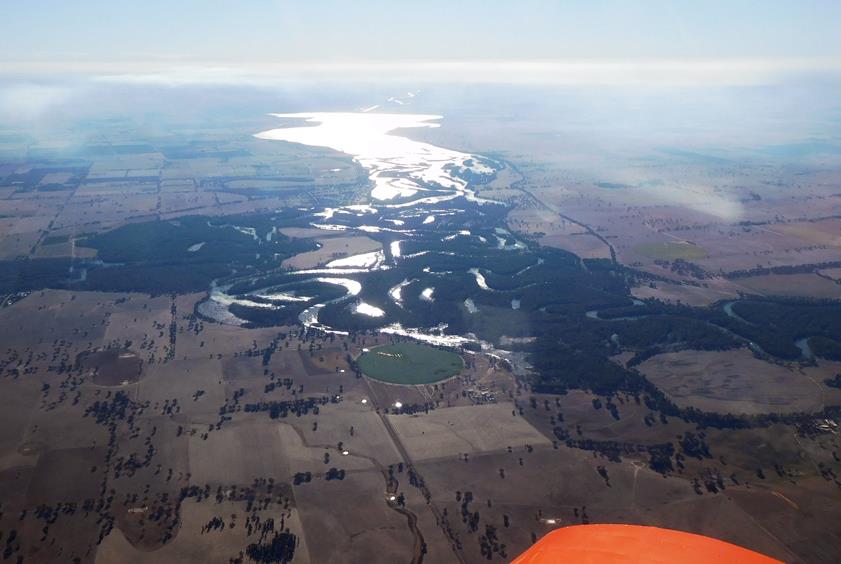
My next turning point was Corowa on the Murray River. On the Victorian side of the river is Rutherglen, which I think is the oldest wine growing area in Victoria. When Australians didn’t drink much table wine, Rutherglen produced mainly fortified wines, and some pretty good ones too. There are a dozen or so wineries, many family owned, and still producing good “stickys” but also producing a good range of table wines, but I think the area has long been overshadowed by the Yarra Valley, Mornington Peninsular and other areas.
The rest of the trip to Holbrook was pretty uneventful until I reached the circuit area. It was my first flight there and I couldn’t pick the wind sock. I did a few twists and turns over the field before I got my directions right and then noticed that in my twisting and turning I had somehow managed to flip the catch on my seat belt. I knew a repeat of the 6.9 G bump that I experienced near Mount Gambier recently was extremely unlikely, but I still didn’t fancy the idea of getting propelled through the canopy so got everything straight and level and hurriedly buckled up before joining the circuit for runway 22.
The fly-in was pretty good. Weather was perfect, there was a variety of aircraft, see photos below (click on thumbnails for bigger views), a talk and question and answer session with the RAA (Recreational Aviation Australia) President, and a very informative talk on building metal aircraft.
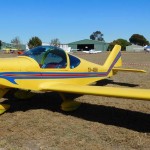
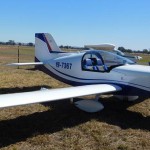
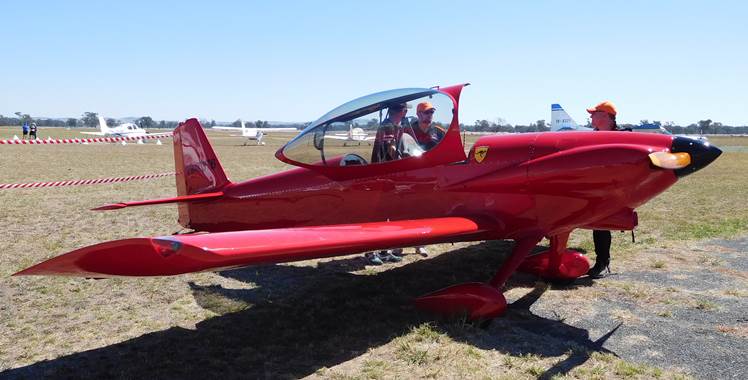
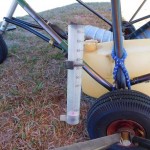
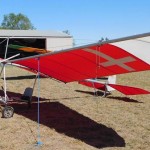
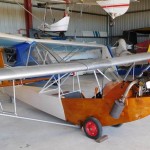
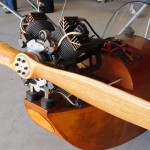
I can’t even imagine why anyone would build an aircraft that looks like this, but the engine is really interesting; it’s a Konig 4 cylinder 2-stroke radial. 2-strokes normally require a separate crank-case chamber for each cylinder but there doesn’t appear to be enough room on this engine. If anyone can tell me how it’s done I’d love to hear from you. The cylinder heads appear to be made from large electrical heat sinks.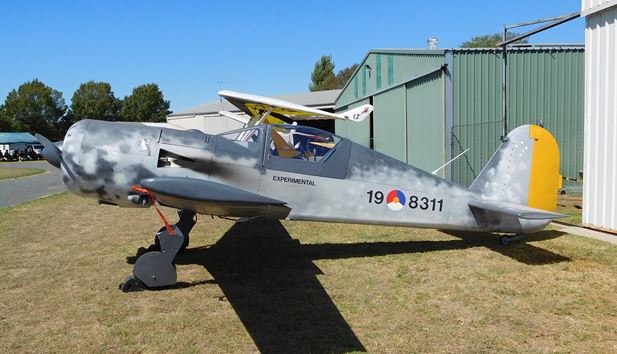
This FW190 replica appears to be about 3/4 size and is powered by a Lycoming 4. It looks really well built but does sort of illustrate the difficulty of building a war-bird replica that looks like the real thing.
Here’s a really rare and interesting aircraft tucked away in one of the hangars – a Ligeti Stratos. I think this is the S2. Charles Ligeti did the test flying on the first model with just 10 hours flying experience. It’s a beautiful looking aircraft but I would think much too radical for an inexperienced pilot, and Charles was killed testing an S2.
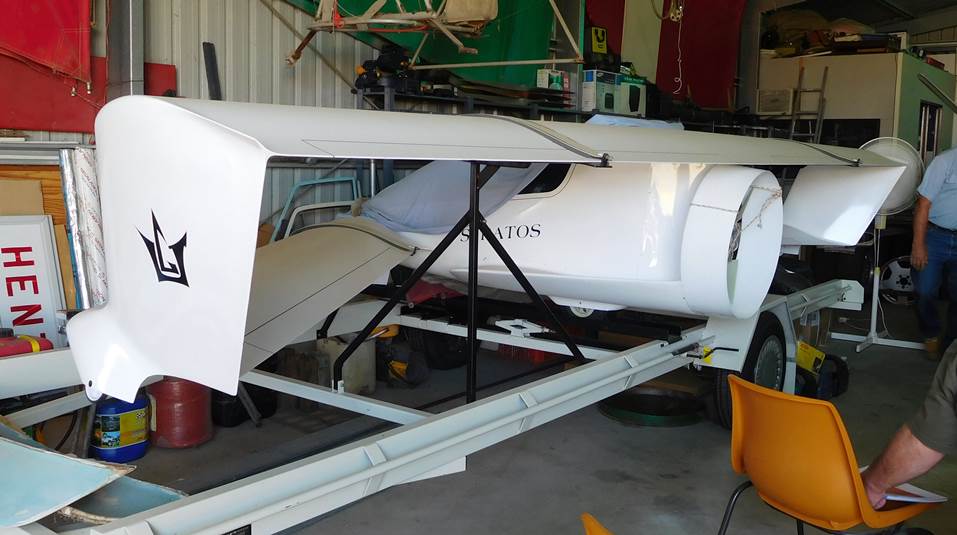

I made my departure at about 4.30 and once I had cleared Albury airspace, climbed to 6500 feet to get above the bumps for the trip home, following the same route. It was clear until Seymour when I had to descend to below 4500 feet to get under a solid shelf of cloud.
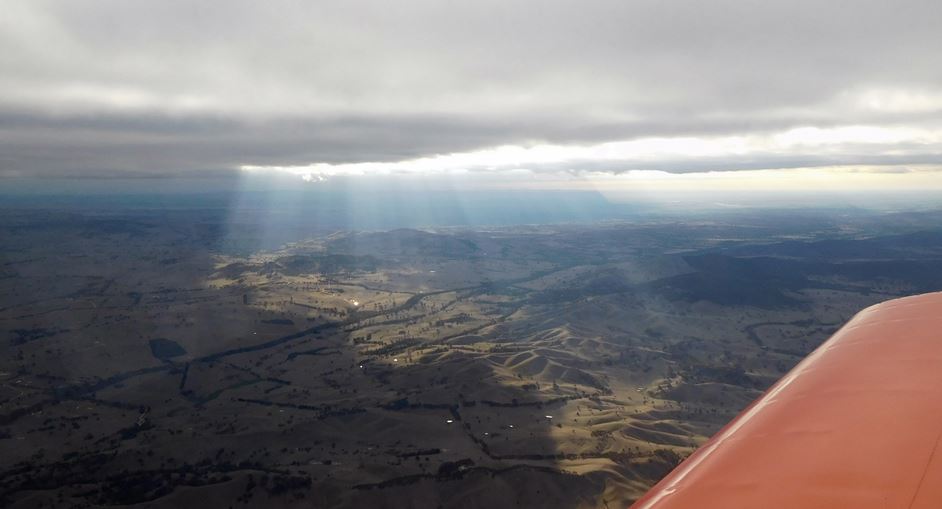
I reached Kyneton with a little over 20 litres of fuel so consumption for the 344 Nm round trip worked out about 8.6 litres/100 km or 27.2 miles/US gallon.
Incidentally, you may have noticed that I don’t mention anything about air traffic control. I recently read a report written by an English private pilot who was visiting Australia and did a flight from my home airfield of Kyneton. He particularly mentioned the lack of ATC at Kyneton, but in fact the only airport in the whole of Victoria, an area about the same size as England, that has full time traffic control is the international airport at Tullamarine, Melbourne, which is one end of one of the busiest jet routes in the world. The very busy light aircraft field at Moorabbin, south east of Melbourne, only has day-time control, the RAAF training base at East Sale has control during operational hours and Avalon near Geelong has ATC if the airlines book it. Everywhere else we just rely on radio communications. There is control of IFR traffic across the whole country of course, but my RAA flying permit does not permit me to fly into controlled space so other than listening on the area frequency, I never have to communicate with ATC.
Peter Anson
March 2016